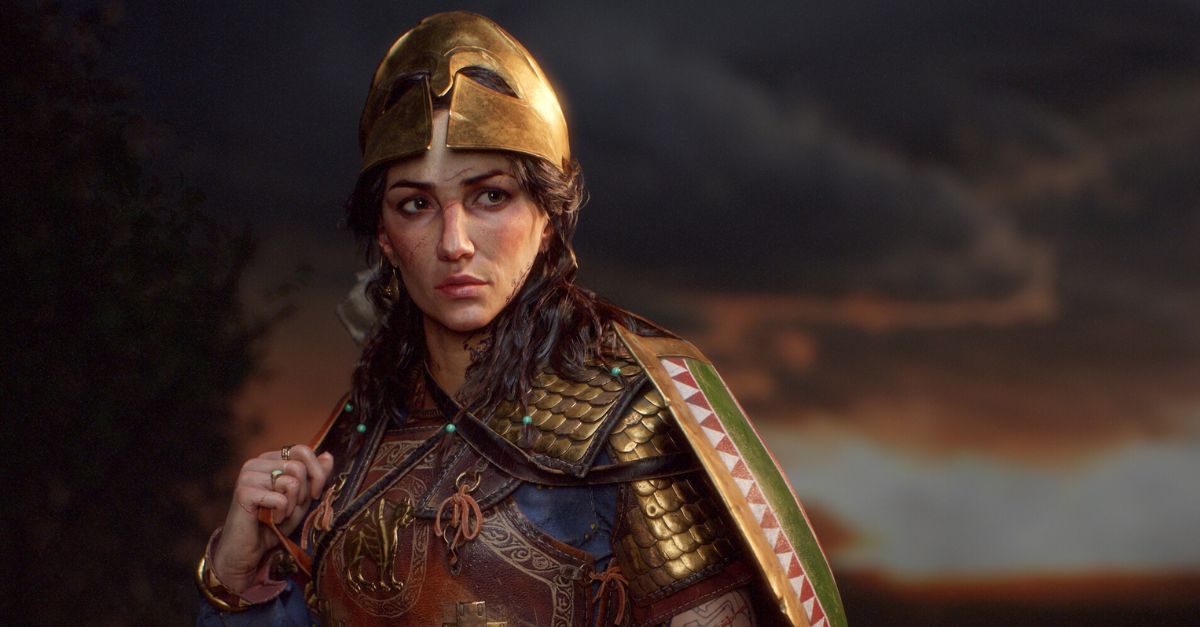Beneath The Siberian Ice
The Scythians rode across empires but left few traces. Now, a 2,800-year-old burial in southern Siberia has cracked open a timeline long obscured by distance and ice.
Siberia Held Clues To A Culture Once Thought Western
It began with a burial mound in Tuva, southern Siberia, older than any Scythian site west of the Urals. Excavations revealed not only elite remains but also artifacts that predated the known kurgans in Ukraine. The Scythians originated farther east than assumed.
Siberia Held Clues To A Culture Once Thought Western (Cont.)
This eastward origin theory gained weight with radiocarbon dates placing Tunnug 1 in the 9th century BCE, well before Scythian expansion into Eastern Europe. The animal-style artifacts and funerary customs matched those that were found thousands of miles away. All of this is indicative of cultural transmission that began in the Siberian-Altai corridor.
 Timur Sadykov, Jegor Blochin, Evgeniya Asochakova, Daria Fedorova, Gino Caspari, Wikimedia Commons
Timur Sadykov, Jegor Blochin, Evgeniya Asochakova, Daria Fedorova, Gino Caspari, Wikimedia Commons
Nomadic Cultures Rarely Leave Cities Or Ruins Behind
Unlike empires that left temples and roads, the Scythians left only bones and ash. Their mobility was their strength—and archaeologists' greatest obstacle. Without permanent structures, their presence had to be traced through scattered burial mounds and the occasional surviving campsite.
Greek Writers Gave Them A Name They Didn't Use
Ancient Greek historians described fierce horseback warriors north of the Black Sea as "Scythians". But the people themselves left no written records of such a name. It was an outsider's label, applied broadly to various nomadic cultures that shared similar ways of life.
 User:SchreiberEvgeniy Paletskiy, Wikimedia Commons
User:SchreiberEvgeniy Paletskiy, Wikimedia Commons
The Steppe's Archaeology Remained Understudied For Decades
Throughout the 20th century, much of the Eurasian Steppe was archaeologically dormant. Soviet restrictions limited foreign collaboration, so the vast, remote terrain made research a slow process. Only in recent decades has sustained excavation begun to map the depth of nomadic life across these wide, wind-beaten plains.
Herodotus' Description Blended Myth And Observations
Herodotus, a 5th-century BCE Greek historian, wrote of warriors who buried kings with sacrificed horses and drank from enemies' skulls. Although it’s sensational, modern digs have confirmed some practices like burial rites and horse sacrifice.
Herodotus' Description Blended Myth And Observations (Cont.)
Sites like Arzhan and Pazyryk confirm details Herodotus noted, including mound construction and burial with weapons. Scythian kurgans feature horse tack and ornate objects, which align with his accounts. Once doubted, his writings now help interpret early nomadic archaeology.
Modern Science Moved The Story Beyond Ancient Texts
Satellite imagery and genome sequencing now drive the study of steppe archaeology. Ground-penetrating radar and isotopic analysis exposed seasonal migration patterns. These tools shifted the Scythian origin point eastward, firmly rooting their early development in the Siberian foothills of Tuva and the Altai.
 The Charles Machine Works, Wikimedia Commons
The Charles Machine Works, Wikimedia Commons
Tunnug 1 Looked Like A Marshy Hill Until It Was Surveyed
At first glance, the Tunnug 1 mound in Tuva resembled nothing more than a soggy hill shaped by natural forces. But satellite images hinted at circular symmetry. In 2018, archaeologists confirmed it was a burial site older than any Scythian kurgan (burial mound) in Europe.
Excavation Teams Worked In Subzero Conditions Over The Years
Flooded summers and frozen winters made Tunnug 1 nearly inaccessible. Excavations spanned years, with researchers enduring biting Siberian winds and deep permafrost. Seasonal flooding forced them to drain the site before digging, which delayed progress but preserved a remarkable amount of organic material in the ice-locked soil.
Eighteen Horse Skeletons Were Found In Ritual Formation
Buried near the central chamber, eighteen horses lay in a deliberate radial pattern. Their alignment mirrored elite Scythian burials from the Pazyryk culture. Each animal appeared carefully placed to indicate ceremonial sacrifice to honor the dead, not a mass grave from warfare or disease.
 Dimitri Pozdniakov, Wikimedia Commons
Dimitri Pozdniakov, Wikimedia Commons
Bronze Belt Plaques Revealed Animal-Style Designs
Among the most striking finds were bronze belt ornaments bearing stylized predator-prey scenes. These motifs match the Scythian "Animal Style", characterized by dynamic, interlocked beasts. Such decorations reflected a belief system rooted in the natural and spiritual worlds of the steppe.
 Gary Todd from Xinzheng, China, Wikimedia Commons
Gary Todd from Xinzheng, China, Wikimedia Commons
Material Sourcing Shows Links To Central Asia And Beyond
Trace element analysis of copper artifacts linked their origin to the Altai and Tianshan mountain ranges. This sourcing suggests extensive trade networks. Despite being buried in a Siberian tomb, the materials suggest long-distance exchange between cultures spanning Central Asia.
 Thomas Depenbusch (Depi) from Cologne, Germany, Wikimedia Commons
Thomas Depenbusch (Depi) from Cologne, Germany, Wikimedia Commons
Burial Stratigraphy Uncovered A Multi-Phase Interment
Careful excavation revealed that the tomb had not been used just once. Stratigraphy showed at least two distinct burial phases, separated by decades. Intrusions into earlier layers suggest ritual reuse, with newer bodies and offerings placed alongside ancestral remains to maintain generational continuity within the mound.
 Sue Fleckney, Wikimedia Commons
Sue Fleckney, Wikimedia Commons
Organic Residues Provided Clues To Funeral Practices
Analysis of soil lipids and charcoal traces showed signs of controlled burning within the burial chamber. This evidence suggests that funerary pyres or ritual fire ceremonies occurred at the site. The presence of ash mixed with animal fat supports practices described in ancient accounts of Scythian burials.
 Ken and Nyetta, Wikimedia Commons
Ken and Nyetta, Wikimedia Commons
Horse-Riding Was Central To Identity And Survival
Archaeological evidence shows that Scythians began riding in early childhood. Skeletal analysis reveals deformation in pelvic and femoral bones due to long hours on horseback. Stirrup-less saddles, found in Scythian tombs, required core strength and balance. This shaped not just mobility but physical development in youth.
 Metropolitan Museum of Art, Wikimedia Commons
Metropolitan Museum of Art, Wikimedia Commons
Horse-Riding Was Central To Identity And Survival (Cont.)
Grave goods often included bridles and grooming tools, which underscore the horse's vital role in daily life and ritual. Horse burials mirrored human status, with elite graves containing decorated harnesses and sacrificed steeds. Riding skill was a mark of honor and identity.
Clothing Was Designed For Wind, Cold, And Speed
Excavations at Pazyryk kurgans in the Altai Mountains uncovered immaculately preserved garments. These included woolen trousers and high leather boots—clothing engineered for temperature swings and long rides. Stitch patterns and layered construction suggest garments were tailored for speed and comfort in motion.
 Ganja Konstantin, CC BY-SA 4.0, Wikimedia Commons
Ganja Konstantin, CC BY-SA 4.0, Wikimedia Commons
Cooked Grains And Meat Show A Diet Of Portability
Inside Scythian burial vessels, researchers found residue of grains and dairy fat. This supports accounts of boiled meals, likely porridge mixed with meat and milk. These foods were calorie-dense and portable, ideal for nomadic travel across vast, resource-scarce steppe regions.
 michael_s_pictures, Wikimedia Commons
michael_s_pictures, Wikimedia Commons
Composite Bows Were Engineered For Speed And Range
Scythian bows, crafted from sinew and wood, were highly durable and allowed mounted archers to shoot rapidly while moving. Archaeological findings confirm that these bows outperformed many contemporary weapons by offering greater velocity and range compared to those used by Greek or Persian infantry archers.
 Epiktetos (signed), Wikimedia Commons
Epiktetos (signed), Wikimedia Commons
Miniature Amulets Were Worn In Pouches, Not Displayed
Tiny bronze and bone amulets found inside leather belt pouches suggest that they were used in personal rituals. Unlike decorative items, these were hidden and portable, possibly carried for protection or spiritual guidance instead of relying on a centralized place of worship.
Their Political System Was Loosely Confederal And Leaderless
No central palace or singular ruling class has been identified in Scythian archaeology. Historical sources and burial patterns suggest a decentralized system, with chieftains or elders leading clans consensually. Unity emerged only during times of warfare or major threats.
 Ken and Nyetta, Wikimedia Commons
Ken and Nyetta, Wikimedia Commons
Their Political System Was Loosely Confederal And Leaderless (Cont.)
Greek historian Strabo wrote about Scythian groups with kinship ties rather than monarchs. Excavated tombs vary widely in richness and design. This supports the idea of autonomous clans with distinct local traditions, and this theory of scattered governance is again proved by the absence of bureaucratic artifacts.
 Andre Thevet, Wikimedia Commons
Andre Thevet, Wikimedia Commons
Mobile Camps Left Behind Nothing But Ash Pits
Nomadic Scythians left few permanent traces. Excavated camps reveal hearth circles and scattered animal bones, with no architectural remains. Their tents—likely made from felt or hide—disappeared over time. What endures are the burned layers and refuse zones marking short-term habitation sites.
 Eugene Delacroix, Wikimedia Commons
Eugene Delacroix, Wikimedia Commons
Elite Individuals Received Chamber Tombs With Wooden Roofing
Some Scythian burials featured timber chambers beneath earth mounds. At Arzhan and Pazyryk, wooden beams formed roofs that collapsed inward as the mound settled. The airtight seal created by soil and climate preserved textiles and even tattooed skin, which offers rare glimpses into elite life.
Aerial Drone Mapping Revealed Hidden Kurgan Clusters
Flying low over Tuva's plains, drones picked up subtle soil depressions invisible from the ground. The circular outlines revealed buried kurgans, which prompted targeted excavation. These aerial surveys helped locate sites without disturbing landscapes. This opened new possibilities for mapping ancient Scythian presence across Siberia.
 Mani1~commonswiki, Wikimedia Commons
Mani1~commonswiki, Wikimedia Commons
Radiocarbon Results Dated The Site To The 9th Century BCE
European laboratories received wood and bone samples from the Tunnug 1 mound for radiocarbon dating in 2019. The burial dates to the late 9th century BCE, far earlier than expected. As a result, early Scythian chronology was redefined, and Tuva emerged as a pivotal cultural hub in the formation of their identity.
 Bill Branson (Photographer), Wikimedia Commons
Bill Branson (Photographer), Wikimedia Commons
Ancient DNA Showed Mixed Steppe And East Asian Ancestry
Ancient DNA from teeth and bone showed that individuals at Tunnug 1 carried both Eastern Steppe and Central Asian ancestry. The evidence confirmed long-distance migration and a deep cultural integration among nomadic groups moving across the Eurasian interior during the early Iron Age.
Isotope Ratios Identify Seasonal Herding Patterns
Isotopic signatures from horse and human teeth revealed seasonal movement patterns. During warmer months, groups traveled to upland grazing zones and then retreated to lowland shelters in winter. These findings reflect a climate-sensitive transhumant system that shaped the Scythians' economy and survival strategies year after year.
Copper Origin Analysis Linked The Mound To Transregional Trade
Chemical profiling of bronze belt ornaments and weapons linked the copper to mines in the Altai and Kyrgyzstan. This suggests wide-ranging trade or resource acquisition networks. The materials used in Tunnug 1's grave goods crossed hundreds of miles before ending up in the burial.
 Mongolia Expeditions…, Wikimedia Commons
Mongolia Expeditions…, Wikimedia Commons
Forensic Reconstruction Gave A Face To The Buried Warrior
The chance to humanize a long-lost Scythian emerged through a 3D facial reconstruction made from a preserved skull. CT scans captured the contours of the man's strong jaw, broad nose, deep-set eyes, and high cheekbones—features of a warrior likely in his thirties, once buried in anonymity.
 Walters Art Musuem, Wikimedia Commons
Walters Art Musuem, Wikimedia Commons
Scientific Collaboration Spanned Six Nations
Hidden beneath Siberian soil, the Tunnug 1 burial site drew international attention. Researchers from six countries—Germany, Switzerland, Russia, Mongolia, Tuva, and the United States—worked across three labs. Each team assumed specialized roles in dating and advanced imaging to decipher the ancient remains.
Animal-Style Art Depicted Predators Over Prey
In Scythian art, carnivorous animals take center stage—claws bared, teeth locked in combat. These images, carved into belt plaques and weaponry, symbolized a warrior's worldview because the predators represented strength and order in the harsh realities of life on the steppe.
Animal-Style Art Depicted Predators Over Prey (Cont.)
These patterns held deep meaning. Recovered items from Arzhan and Pazyryk display consistent predator-prey scenes—deer torn by big cats and raptors attacking from above. Such repetition signals shared symbolism across steppe tribes to form a visual grammar that expresses hierarchy and spiritual belief through animal conflict.
Buried Tools Matched Status
Weapons in elite tombs often showed no signs of wear, as swords remained sharp but unused, and arrows were neatly bundled. Their value lay in symbolism rather than utility since these items likely affirmed status in death and formed part of a ritual script staged with precision.
 Derzsi Elekes Andor, Wikimedia Commons
Derzsi Elekes Andor, Wikimedia Commons
Gold Objects Were Lightweight And Ritual
The gold buried with Scythian nobles was too thin for trade. Plaques were sewn onto garments or headdresses, not cast into coins. Their delicacy suggests ceremonial use by reinforcing the role of gold as a marker of spiritual prestige rather than an economic instrument in the burial context.
 Derzsi Elekes Andor, Wikimedia Commons
Derzsi Elekes Andor, Wikimedia Commons
Celestial Beliefs Focused On The Sky As A Gateway
Scythian burials often face cardinal directions. In some tombs, bird motifs—especially raptors—appear repeatedly. These symbols likely referred to a sky-centered cosmology, with the heavens viewed as a passage to the afterlife.
 Karl Bodmer, Wikimedia Commons
Karl Bodmer, Wikimedia Commons
Iconography Replaced Language To Record Lineage And Lore
Without writing systems, Scythians turned to motifs and metal. Recurring symbols on belt buckles and armor may have communicated lineage or tribal memory. These visual cues offered identity and continuity in a world defined by oral tradition and shifting territory.
 Urek Meniashvili, Wikimedia Commons
Urek Meniashvili, Wikimedia Commons
Steppe Routes Linked China To The Black Sea Before Rome
Long before Rome formalized the Silk Roads, Scythian networks connected China to the Black Sea. Excavations from Ukraine to Mongolia have revealed silk threads, Chinese nephrite, and Greek amphorae buried in elite tombs. These findings confirm the Scythians' vital role as intermediaries in transcontinental exchange.
 Jeff Schmaltz, MODIS Rapid Response Team, NASA/GSFC, Wikimedia Commons
Jeff Schmaltz, MODIS Rapid Response Team, NASA/GSFC, Wikimedia Commons
Scythian Arrows Were Found In Persian Forts
Across Iran and Central Asia, archaeologists have recovered bronze trilobate arrowheads identical to Scythian designs. These artifacts echo Herodotus' descriptions of Scythian clashes with Persia. Their presence in Achaemenid forts shows that cultural contact also occurred through armed exchange—an influential vector along the steppe frontiers.
 Bruce C. Cooper (digital image), Wikimedia Commons
Bruce C. Cooper (digital image), Wikimedia Commons
Imported Pottery Showed A Taste For Hellenic Style
Athenian black-figure pottery, found in Scythian kurgans near the Black Sea, signals taste. These goods arrived via Greek colonies, such as Olbia, and were placed in elite graves. Their presence reveals deliberate cultural borrowing, meaning that the Scythians selectively embraced foreign influence.
Sarmatians And Other Tribes Continued Scythian Traditions
Scythian influence endured long after their political decline. The Sarmatians adopted Scythian burial mounds and reused their designs for horse gear. Motifs persisted among later steppe groups, especially in the Pontic region. Through stylistic continuity, Scythian culture shaped successor traditions and remained embedded in the steppe's visual language.
 AQUILIBRION, Wikimedia Commons
AQUILIBRION, Wikimedia Commons
Their Ideas Outlasted Their Political Structures
Even after the Scythians faded as a power, their cultural frameworks endured. Nomadic successor groups adopted their burial customs and cavalry techniques. The very idea of steppe nobility—measured through horse wealth and warrior prestige—echoed long after Scythian kings disappeared from recorded history.
 Marie-Lan Nguyen , Wikimedia Commons
Marie-Lan Nguyen , Wikimedia Commons
Siberia Reclaims Its Place In Human History
For decades, Siberia remained on the edges of mainstream historical narratives. But discoveries like Tunnug 1 are restoring its importance. These findings position Siberia not as a periphery but as a cultural engine—one that shaped the early dynamics of Eurasian civilization through movement and exchange.
 Saperaud~commonswiki, Wikimedia Commons
Saperaud~commonswiki, Wikimedia Commons























